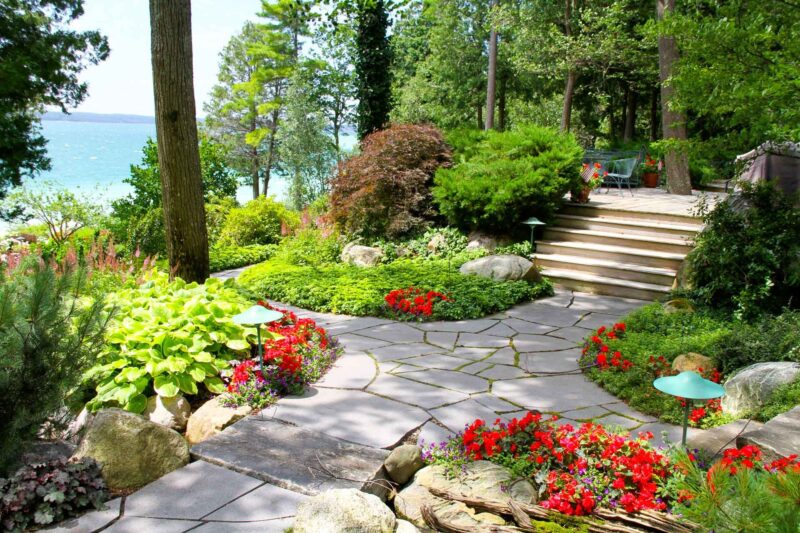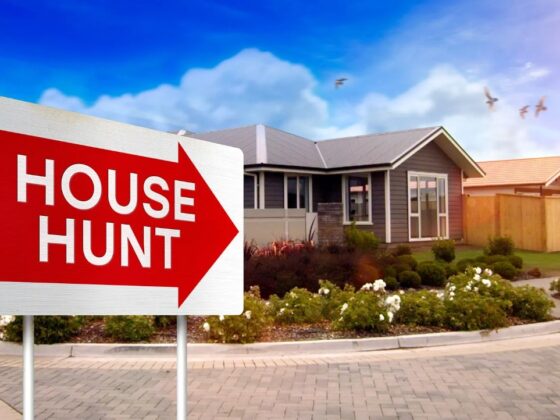Imagine walking through a beautifully designed backyard.
You notice the lush greenery, the vibrant flowers, and then your eyes are drawn to a stunning stone pathway, leading to a cozy patio where friends and family gather.
This is the magic of hardscaping. Without these elements, a landscape might just feel like a wild, unstructured space.
Hardscaping provides structure, functionality, and aesthetic appeal to any outdoor area, making it an essential component of creating an outstanding landscape design project.
What is Hardscaping?
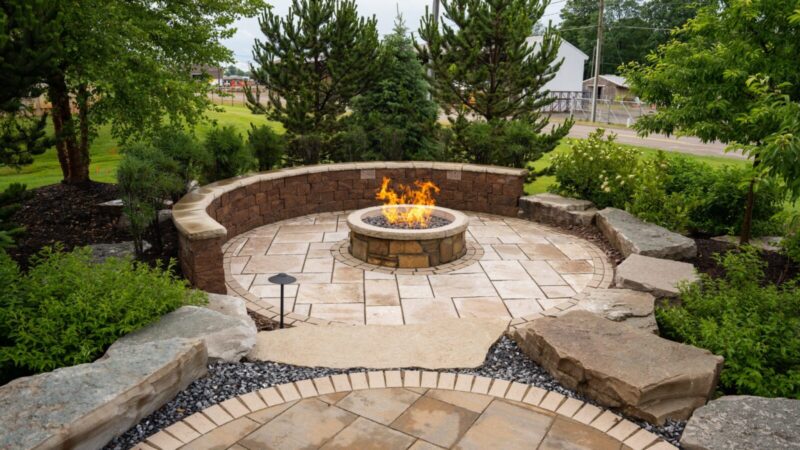
Hardscaping refers to the non-living elements of a landscape design. These can include patios, walkways, retaining walls, water features, and outdoor living spaces.
Unlike softscaping, which involves plants, trees, and flowers, hardscaping focuses on the solid, durable components that give a landscape its shape and functionality.
The Role of Hardscaping in modern Landscape Design
Hardscaping adds layers of structural integrity and aesthetic appeal to a landscape design and/or landscape architecture project.
Professional landscape architects recommend hardscaping as an essential component of a well-balanced landscape design and construction project.
It creates the framework around the natural elements so that the overall landscape design can thrive. Imagine a fully landscaped outdoor area without paths, pool coping/tiling or seating areas – it would be difficult to navigate and enjoy.
Hardscaping elements like patios and walkways make the outdoor space much more usable, inviting and pleasing to the eye.
Common Hardscaping Elements Patios
Patios are one of the most popular hardscaping features. They provide a perfect outdoor living space for dining, relaxing, and entertaining. Common materials used for patios include concrete, natural stone, and pavers. A well-designed patio can significantly enhance the functionality and beauty of your outdoor space.
Walkways
Walkways guide visitors through your landscape, connecting different areas in a seamless manner. They can be made from various materials such as brick, stone, or gravel.
Walkways not only improve accessibility but also add a decorative element to your garden.
Retaining Walls
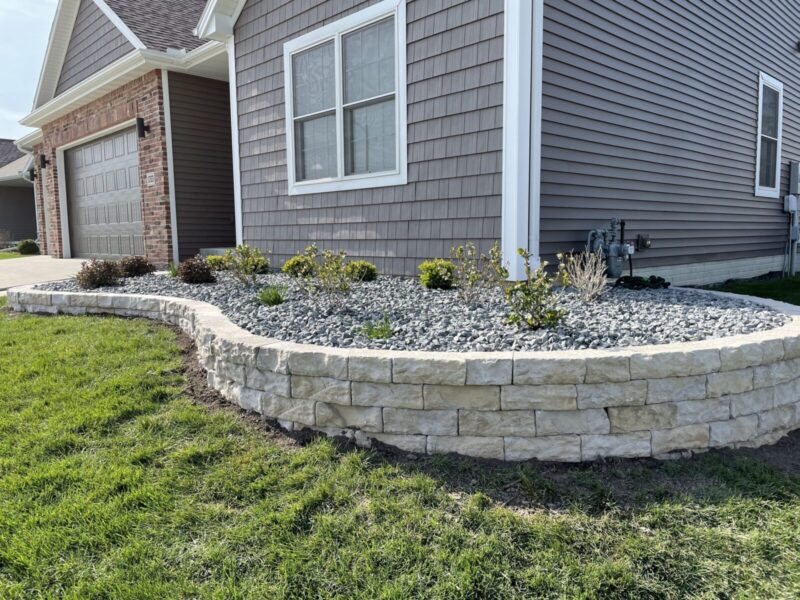
Retaining walls serve both functional and aesthetic purposes. They help manage soil erosion, create level areas on a sloped site, and add a distinct visual appeal.
Materials like stone, brick, and concrete are commonly used for retaining walls, each offering different design possibilities.
Water Features
Water features like fountains, ponds, and waterfalls can transform a garden into a tranquil oasis. They add a soothing sound and a visual focal point that can make your landscape feel more serene and inviting.
Outdoor Living Spaces
Outdoor living spaces, such as kitchens, dining areas, and fire pits, extend the comfort of your home into the garden. These spaces can be furnished with weather-resistant furniture and equipped with amenities like grills and sinks, making them perfect for entertaining guests.
Benefits of Hardscaping Low Maintenance
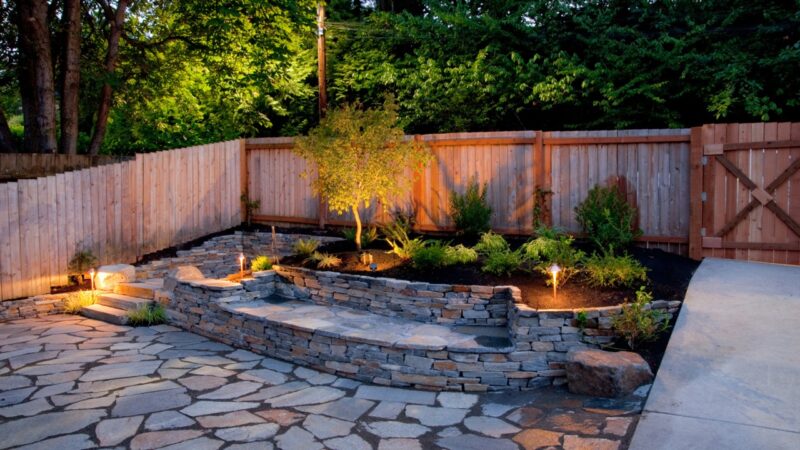
Unlike softscaping elements that require regular watering, pruning, and fertilizing, hardscaping features are relatively low maintenance. Once installed, they need minimal upkeep, making them an attractive option for busy homeowners.
Durability
Hardscaping materials are designed to withstand the elements. Whether it’s a stone patio or a concrete walkway, these features are built to last, providing long-term value and enjoyment.
Increased Property Value
A well-designed landscape that includes hardscaping elements can significantly increase the value of your property. Potential buyers are often drawn to homes with beautiful, functional outdoor spaces.
Enhancing Usability of Outdoor Space
Hardscaping elements create defined areas for various activities, enhancing the usability of your outdoor space. Whether it’s a patio for dining, a walkway for strolling, or a retaining wall for creating level garden beds, hardscaping makes your garden more functional and enjoyable.
Hardscaping Materials
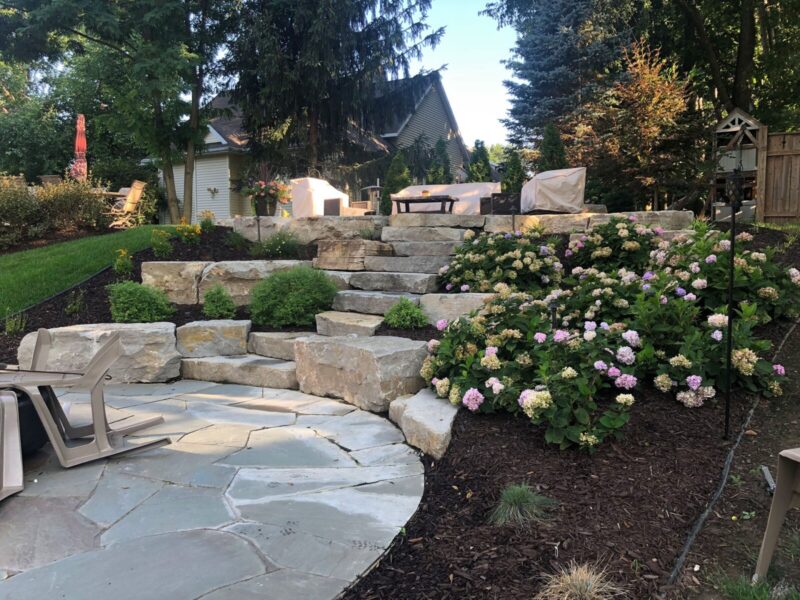
Natural Stone
Natural stone is a popular choice for hardscaping due to its durability and timeless appeal. It can be used for patios, walkways, and retaining walls, offering a variety of textures and colors.
Pavers
Pavers are versatile and come in various shapes, sizes, and colors. They are commonly used for patios and walkways, providing a durable and attractive surface.
Concrete
Concrete is a durable and cost-effective material for hardscaping. It can be stamped, stained, or textured to mimic the look of more expensive materials like stone or brick.
Wood
Wood can be used for decking, fences, and pergolas, adding a natural warmth to your landscape. However, it requires regular maintenance to prevent rot and decay.
Landscape Design Principles for Beautiful Hardscaping
Balance
Balance in hardscaping can be achieved through symmetry or asymmetry. Symmetrical designs offer a formal and orderly appearance, while asymmetrical designs provide a more relaxed and natural look.
Contrast
Contrast is about combining different elements to create visual interest. Pairing hardscaping features with softscaping elements can create a dynamic and appealing landscape.
Proportion
Proportion involves ensuring that the size of hardscaping elements is appropriate for the overall landscape. Proper scaling can make a space feel balanced and harmonious.
Unity
Unity in hardscaping means that all elements work together cohesively. This can be achieved by using a consistent design style, color scheme, and materials throughout the landscape.
Hardscaping for Different Climates
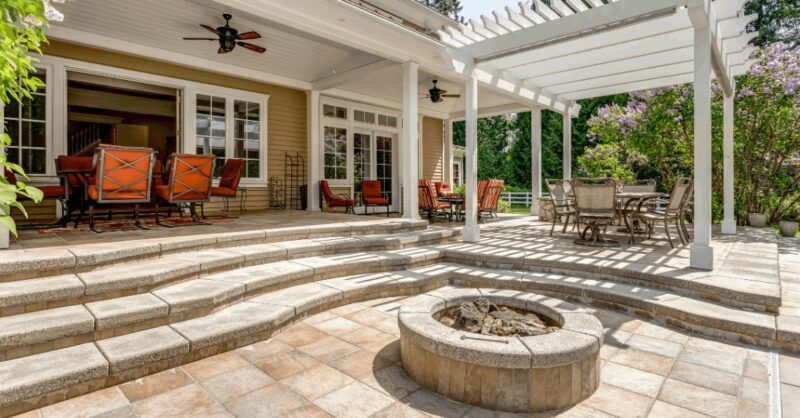
When designing hardscaping for different climates, it’s important to consider the local weather conditions. For instance, in colder climates, materials that can withstand freeze-thaw cycles are essential. In warmer climates, heat-resistant materials are preferable.
Environmental Impact of Hardscaping
Sustainable hardscaping practices can help reduce the environmental impact of your landscape.
If you like to try and be sustainable, consider using recycled or locally sourced materials, permeable pavers, and incorporating water-saving features like rain gardens to make your hardscaping more eco-friendly.
DIY Hardscaping vs Hiring a Professional
DIY hardscaping can be cost-effective and rewarding, but it requires time, effort, and some level of expertise.
Hiring a professional ensures high-quality results and saves you time, but it can be more expensive.
Tips for DIY Enthusiasts
If you choose to tackle a hardscaping project yourself, start with small, manageable tasks.
Do thorough research, plan carefully, and use quality materials to ensure long-lasting results.
Don’t be afraid to seek out expert advice if you are unsure or you get stuck.
Common Mistakes in Hardscaping
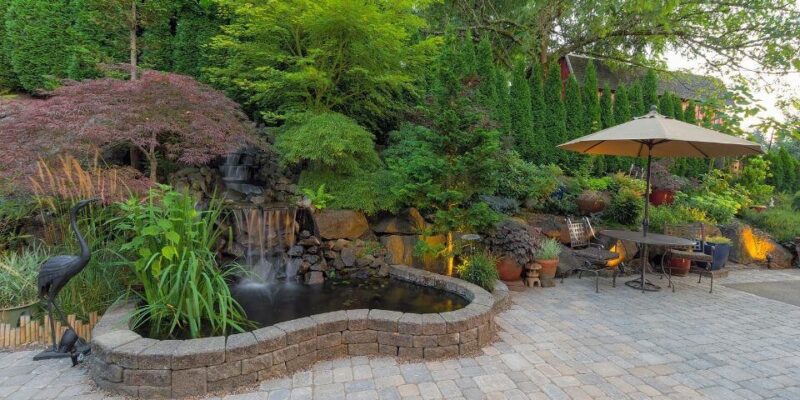
Overlooking Drainage
Proper drainage is crucial in hardscaping to prevent water damage and erosion. Ensure that your design includes adequate drainage solutions.
Poor Planning
Failing to plan properly can lead to a disjointed and unappealing landscape. Take the time to design a cohesive plan that considers both functionality and aesthetics.
Choosing the Wrong Materials
Selecting materials that are not suited to your climate or intended use can result in premature wear and maintenance issues. Choose materials that are durable and appropriate for your specific needs.
Maintenance Recommendations for Hardscaped Structures
Regular Cleaning
Keep your hardscaping features clean by sweeping, washing, and removing debris regularly. This will help maintain their appearance and prevent damage.
Sealing and Repairs
Some materials, like concrete and natural stone, benefit from sealing to protect them from the elements. Regularly inspect your hardscaping for any signs of damage and repair them promptly.
Trends in Hardscaping Popular Designs
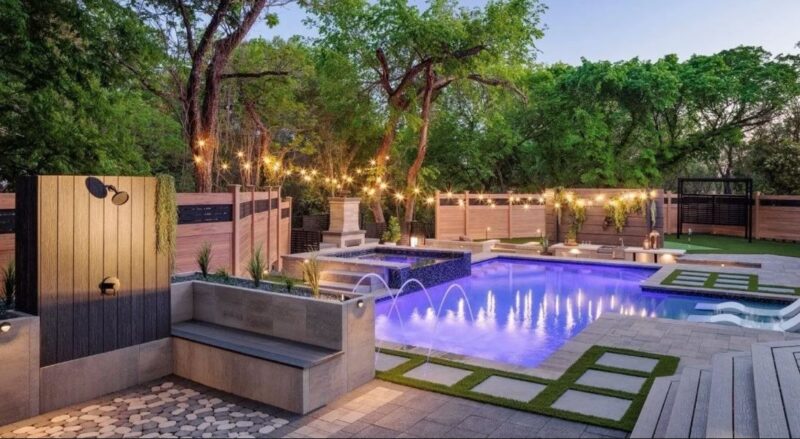
Current trends in hardscaping for 2024 include naturalistic designs, geometric patterns, and the use of mixed materials. These trends can add a modern and stylish touch to your landscape.
Innovative Materials
Innovative materials like recycled composites and eco-friendly pavers are becoming popular in hardscaping. These materials offer durability and sustainability, making them a great choice for environmentally conscious homeowners.
Incorporating Hardscaping with Softscaping
Achieving harmony between hardscaping and softscaping (soft landscaping) is key to a successful landscape design.
Use hardscaping elements to create structure and define spaces, and fill these areas with lush, vibrant plants for a balanced and appealing outdoor area.
Hardscaping is Essential for your Landscape Design Project
Incorporating hardscaping into your landscape design creates a more functional, beautiful, and enjoyable outdoor space.
From patios and walkways to retaining walls and water features, hardscaping elements provide the structure and style that every great garden needs.
By understanding the principles of hardscaping and choosing the right materials, you can transform your outdoor spaces into stunning and functional areas.
